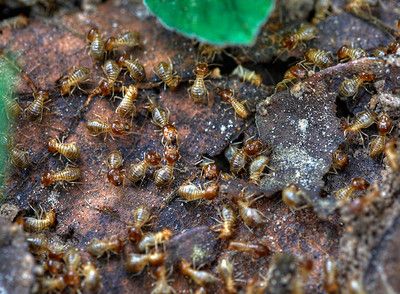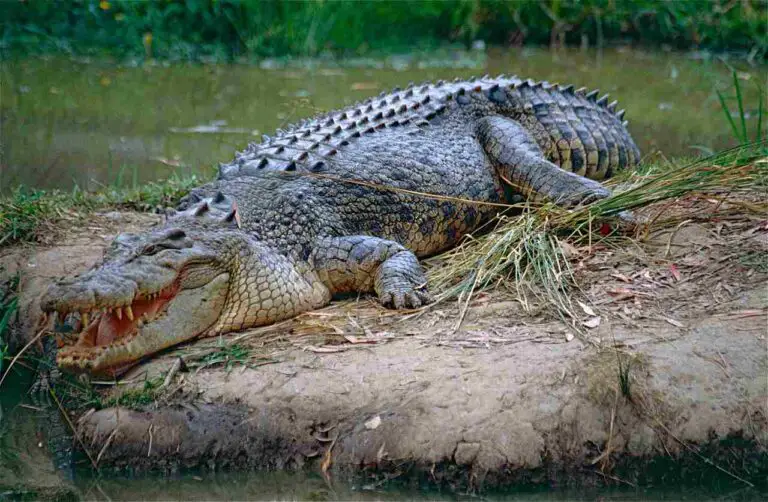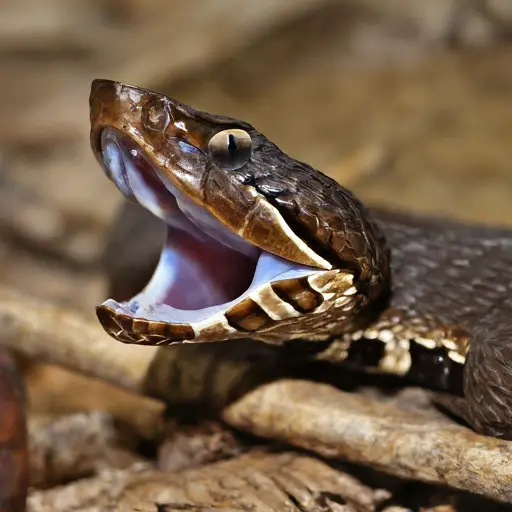Top 10 Dangerous Animals In Jamaica And Their Characteristics
The top 10 dangerous animals in Jamaica are the Jamaican Yellow Boa, American Crocodile, Jamaican Scorpion, Jamaican Giant Centipede, Jamaican Fruit Bat, Tiger Shark, Portuguese Man-of-War, Sea Urchin, Lionfish, and Barracuda. These animals can pose risks to humans through bites, stings, or other injuries. The American Crocodile and Tiger Shark are particularly dangerous due to their size and aggressive nature. Other creatures, like the Portuguese Man-of-War and Lionfish, have venomous stings that can cause severe reactions, while the Jamaican Scorpion and Jamaican Giant Centipede can deliver painful bites. Although many of these animals contribute to Jamaica’s diverse ecosystems, caution is advised to avoid harmful encounters.
1. Jamaican Yellow Boa
The Jamaican Yellow Boa (Epicrates subflavus) is a large constrictor snake found only in Jamaica. This species can grow up to 2 meters in length, making it one of the largest native snakes in the Caribbean. Its coloration ranges from yellow to orange with brown spots or stripes, which provides excellent camouflage in the dense forests and limestone caves where it lives. Despite its fearsome appearance, the Jamaican Yellow Boa is not venomous and poses minimal risk to humans. However, its powerful constricting ability allows it to subdue small mammals and birds, making it an important predator in its ecosystem.
Though not typically dangerous to humans, the Jamaican Yellow Boa’s status as a threatened species has increased its interactions with people. Habitat destruction and the pet trade have contributed to its decline, causing these snakes to seek food sources in more populated areas. This has led to occasional encounters with humans, sometimes resulting in bites from defensive boas. While these bites are not life-threatening, they can be painful and should be treated with care to prevent infection. Efforts are underway to conserve the species and educate locals about its ecological importance, emphasizing that the Jamaican Yellow Boa plays a crucial role in maintaining the balance of Jamaica’s unique ecosystems.
2. American Crocodile
The American Crocodile (Crocodylus acutus) is one of the most formidable predators in Jamaica’s wetlands and coastal areas. This large reptile can grow up to 15 feet in length and is known for its powerful jaws, capable of delivering a crushing bite. It primarily inhabits mangroves, brackish waters, and saltwater habitats, where it preys on fish, birds, and other small mammals. While generally not aggressive toward humans, American Crocodiles can be dangerous if they feel threatened or are protecting their territory, particularly during the breeding season.
Human interactions with the American Crocodile have increased due to encroachment on its habitat and tourism-related activities. These encounters can be hazardous, especially if humans venture into areas where crocodiles are known to nest or hunt. Although attacks on people are rare, they can be fatal. Conservation efforts aim to preserve this species while promoting safe practices to minimize conflicts with humans. It’s crucial to respect the crocodile’s habitat and avoid areas where sightings have been reported.
3. Jamaican Scorpion
The Jamaican Scorpion (Centruroides gracilis) is a venomous arachnid found throughout Jamaica, particularly in wooded and rocky areas. Although relatively small, with a body length of about 5 to 7 centimeters, this scorpion packs a painful sting that can cause severe reactions in some individuals. Its venom contains neurotoxins that can lead to intense pain, swelling, and, in rare cases, more serious symptoms like muscle spasms and respiratory distress.
The Jamaican Scorpion often seeks shelter in dark, secluded spots, making it a common surprise for those exploring caves, gardens, or even homes. While not typically deadly, a sting can be a serious concern for individuals with allergies or pre-existing medical conditions. It is advisable to wear protective clothing and exercise caution when exploring areas where scorpions are known to reside. If stung, it’s important to seek medical attention promptly to manage the symptoms and prevent complications.
4. Jamaican Giant Centipede
The Jamaican Giant Centipede (Scolopendra gigantea) is a fearsome arthropod known for its size and aggressive behavior. It can grow up to 30 centimeters long and has powerful mandibles capable of inflicting a painful bite. This centipede is a carnivorous predator that hunts small insects, lizards, and even small birds. Its venom contains a potent mix of enzymes and toxins that help it subdue its prey, but can also cause intense pain and swelling in humans.
Despite its intimidating appearance, the Jamaican Giant Centipede is generally not life-threatening to humans. However, its bite can be extremely painful, leading to localized swelling, redness, and in some cases, mild fever or nausea. This centipede is often found in moist, dark places, such as under rocks or in decaying wood, and may enter homes in search of food or shelter. Caution should be exercised when encountering these centipedes, and medical attention should be sought if bitten to manage the pain and prevent infection.
5. Jamaican Fruit Bat

The Jamaican Fruit Bat (Artibeus jamaicensis) is a common species in Jamaica, playing a significant role in pollination and seed dispersal. These bats feed on a variety of fruits, using their keen sense of smell to locate their food in the dark. Though they are generally harmless to humans, they can carry diseases such as rabies, making them a potential risk if they come into contact with people. Additionally, their droppings, known as guano, can harbor harmful bacteria and fungi.
These bats typically roost in large colonies within caves or tree hollows, and occasionally in man-made structures. While they are not aggressive, human contact should be avoided to reduce the risk of disease transmission. If bitten or scratched by a bat, medical attention should be sought immediately to prevent rabies or other infections. It’s also advisable to wear protective gear when exploring areas where these bats are known to roost.
6. Tiger Shark
The Tiger Shark (Galeocerdo cuvier) is one of the most dangerous shark species found in Jamaican waters. Known for its distinct stripes and formidable size, this shark can grow over 15 feet long and is a top predator in the ocean. Tiger Sharks are opportunistic feeders, preying on a wide range of marine life, including fish, birds, and sea turtles. Their powerful jaws and aggressive behavior make them a potential threat to humans, particularly in areas where they are known to hunt or during certain times of the year when they are more active.
Encounters with Tiger Sharks are rare, but when they do occur, they can be fatal. Swimmers and divers should exercise caution in shark-prone waters, avoiding areas where Tiger Sharks are known to frequent. It’s also advisable to heed local warnings and guidelines about shark activity to minimize the risk of an encounter. Conservation efforts aim to protect this species while promoting safety measures to reduce human-shark conflicts.
7. Portuguese Man-of-War
The Portuguese Man-of-War (Physalia physalis) is not a jellyfish but a siphonophore—a colony of specialized, genetically identical organisms. Found in Jamaican waters, it poses a significant danger to swimmers and beachgoers. With its long tentacles, which can extend up to 30 feet, the Portuguese Man-of-War contains venomous nematocysts capable of delivering a painful sting. The venom can cause intense pain, welts, and, in severe cases, respiratory distress or heart problems.
Due to its venomous nature, beachgoers should be cautious if they see the Portuguese Man-of-War washed ashore or floating near the coast. If stung, immediate medical attention is recommended, as the venom can cause severe reactions in some individuals. Rinsing the sting with vinegar or saltwater can help neutralize the venom, but freshwater should be avoided, as it can trigger additional stinging. Safety warnings are typically issued in areas where these creatures are common, helping to minimize the risk to the public.
8. Sea Urchin
Sea Urchins are common in Jamaica’s coastal waters, particularly among coral reefs and rocky shorelines. These spiny marine creatures can pose a hazard to divers and snorkelers, as their sharp spines can cause painful puncture wounds. Some species of sea urchins are also venomous, with spines that can release toxins, leading to intense pain, swelling, and even systemic symptoms in severe cases. The most dangerous sea urchin in Jamaica is the long-spined sea urchin (Diadema antillarum), known for its thin, needle-like spines.
Sea Urchin injuries often occur when people accidentally step on them or come into contact with their spines while swimming or diving. To avoid these injuries, it’s best to wear protective footwear when exploring rocky beaches or coral reefs and exercise caution when swimming in areas where sea urchins are common. If injured, medical attention should be sought to remove the spines safely and to manage any potential complications from the venom.
9. Lionfish
The Lionfish (Pterois volitans) is an invasive species in Jamaican waters, known for its striking appearance and venomous spines. These fish have long, flowing fins and a distinctive pattern of stripes, but their beauty masks a dangerous secret. The spines contain venom that can cause intense pain, swelling, and even systemic reactions like difficulty breathing or heart issues. Lionfish are generally not aggressive toward humans, but their spines can cause serious injury if touched or stepped on.
Lionfish are a significant ecological threat because they lack natural predators in Jamaican waters and can disrupt local ecosystems. They feed on a wide variety of smaller fish and invertebrates, leading to a decline in native species. Divers and snorkelers should be cautious around lionfish and avoid contact with their spines. Conservation efforts are underway to control the spread of this invasive species, including organized lionfish hunts and public awareness campaigns.
10. Barracuda
The Barracuda (Sphyraena barracuda) is a fast and aggressive predator found in Jamaica’s coastal waters. With its long, sleek body and sharp teeth, the Barracuda can grow up to 6 feet in length and is known for its speed and agility. While generally not a threat to humans, Barracudas can be dangerous if they feel threatened or if they mistake shiny objects for prey. Their sharp teeth can cause deep lacerations and severe injuries if they attack.
Encounters with Barracudas are rare, but they can happen in areas where these fish are common. Swimmers and divers should avoid wearing shiny jewelry or accessories that might attract a Barracuda’s attention. If attacked, immediate medical attention is crucial to manage the injuries and prevent infection. Conservation efforts aim to preserve the Barracuda’s population while promoting safety measures to reduce human-fish conflicts. It’s important to respect the natural habitat of these predators and avoid provoking them.
| Animal | Description |
| Jamaican Yellow Boa |
Large non-venomous snake; powerful constrictor, lives in forests and caves; minimal threat but can bite defensively.
|
| American Crocodile |
Large crocodile in wetlands and coastal areas; can grow up to 15 feet; potential threat during breeding season or if threatened.
|
| Jamaican Scorpion |
Venomous scorpion found in wooded and rocky areas; painful sting with neurotoxins; can cause severe reactions in some cases.
|
| Jamaican Giant Centipede |
Large centipede with powerful mandibles; aggressive; venom causes intense pain; often found in dark, moist areas.
|
| Jamaican Fruit Bat |
Common bat species in Jamaica; harmless but can carry rabies; droppings (guano) can harbor harmful bacteria and fungi.
|
| Tiger Shark |
Large shark species; top predator; aggressive behavior; can be dangerous in certain areas or times of the year.
|
| Portuguese Man-of-War |
Siphonophore with long venomous tentacles; causes painful stings and severe reactions in some individuals.
|
| Sea Urchin |
Marine creatures with sharp spines; can cause painful puncture wounds; some species are venomous; common in coral reefs and rocky shorelines.
|
| Lionfish |
Invasive species with venomous spines; striking appearance; can cause intense pain and severe reactions; ecological threat to native species.
|
| Barracuda |
Fast and aggressive predator; sharp teeth; can cause deep lacerations; avoid shiny objects in Barracuda-prone waters.
|












